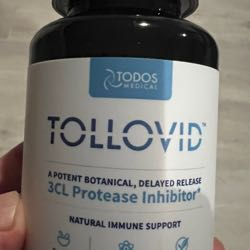Posted On: 01/15/2015 10:15:07 AM
Post# of 30080

Tweeted by GC:
PATHOGENIC PROTEINS IN NEURALLY-DERIVED BLOOD EXOSOMES NEAR-PERFECT DIAGNOSTIC AND PROGNOSTIC BIOMARKERS FOR ALZHEIMER'S DISEASE
Dimitrios Kapogiannisemail, Massimo S. Fiandaca, Mark Mapstone, Adam Boxer, Erez Eitan, Janice B. Schwartz, Erin L. Abner, Ronald C. Petersen, Howard J. Federoff, Bruce Miller, Edward J. Goetzl
DT-01-04
Article has an altmetric score of 3
DOI: http://dx.doi.org/10.1016/j.jalz.2014.07.152
showArticle Info
Abstract
Full Text
Images
Background: Exosomes are endosome-derived membranous vesicles that are released by various cells (including neurons), can be recovered from blood, and contain macromolecules reflecting their cellular source. Exosomes derived from Alzheimer's disease (AD) models and cerebrospinal fluid of AD patients contain pathogenic proteins, such as P-T181-tau and Aβ(1-42). We hypothesized that neural-origin exosomes can be derived from plasma and provide biomarkers for AD.
Methods: We studied 57 patients with probable AD and 57 age- and sex-matched controls (for diagnostic classification); and 24 AD patients and 24 controls, at two time points (for prognostic classification). We isolated exosomes from plasma and derived a fraction enriched for neural origin by means of expressing NCAM and L1-CAM. We quantified total tau, P-T181-tau, P-S396-tau and Aβ(1-42) in neural-origin-enriched exosomes and examined their individual and combined performance in diagnostic and prognostic classification of AD using Discriminant Classification (cross-validated using leave-1-out) and Receiver Operating Characteristic (ROC) analyses.
Results: AD patients had many-fold higher exosomal levels of total tau, P-T181-tau, P-S396-tau and Aβ(1-42) vs. controls (e.g. P-T181-tau, 106 vs. 17 pg/ml, p<0.001; Figure displays means and 95% C.I.). A cross-validated Discriminant Classification model incorporated P-T181-tau, P-S396-tau and Aβ(1-42) stepwise and correctly classified 96.4% of cases. The model achieved an ROC Area Under the Curve of 0.999 for AD vs. control diagnosis (see Figuregt . To examine the performance of exosomal biomarkers in prognostic classification, we studied an additional 24 AD patients, at the time of their original diagnosis and 1-10 years earlier, and 24 controls. We found that preclinical and clinical exosomal levels of P-T181-tau and P-S396-tau were indistinguishable, while preclinical Aβ(1-42) was lower than clinical; preclinical levels of all three were higher vs. controls (p<0.001); and preclinical levels of all three were similar in those converting 1-5 vs. 6-10 years later.
. To examine the performance of exosomal biomarkers in prognostic classification, we studied an additional 24 AD patients, at the time of their original diagnosis and 1-10 years earlier, and 24 controls. We found that preclinical and clinical exosomal levels of P-T181-tau and P-S396-tau were indistinguishable, while preclinical Aβ(1-42) was lower than clinical; preclinical levels of all three were higher vs. controls (p<0.001); and preclinical levels of all three were similar in those converting 1-5 vs. 6-10 years later.
Conclusions: Our method for enriching blood exosomes for neural origin yielded concentrations two orders of magnitude higher for tau and P-T181-tau, and similar in magnitude for Aβ(1-42), compared to previous measurements in the liquid phase of blood. P-T181-tau, P-S396-tau and Aβ1-42 levels in neural-origin-enriched blood exosomes near-perfectly discriminate AD patients vs. controls and may predict future AD diagnosis. The study was supported in part by the Intramural Research Program of the National Institute on Aging, National Institutes of Health (DK, EE); by the NIA RO1AG030753 from the National Institutes of Health (HJF); by the UK ADC P30 AG028383 (ELA); and by Nanosomix, Inc. (EJG).
Thumbnail image of Figure. Opens large image
PATHOGENIC PROTEINS IN NEURALLY-DERIVED BLOOD EXOSOMES NEAR-PERFECT DIAGNOSTIC AND PROGNOSTIC BIOMARKERS FOR ALZHEIMER'S DISEASE
Dimitrios Kapogiannisemail, Massimo S. Fiandaca, Mark Mapstone, Adam Boxer, Erez Eitan, Janice B. Schwartz, Erin L. Abner, Ronald C. Petersen, Howard J. Federoff, Bruce Miller, Edward J. Goetzl
DT-01-04
Article has an altmetric score of 3
DOI: http://dx.doi.org/10.1016/j.jalz.2014.07.152
showArticle Info
Abstract
Full Text
Images
Background: Exosomes are endosome-derived membranous vesicles that are released by various cells (including neurons), can be recovered from blood, and contain macromolecules reflecting their cellular source. Exosomes derived from Alzheimer's disease (AD) models and cerebrospinal fluid of AD patients contain pathogenic proteins, such as P-T181-tau and Aβ(1-42). We hypothesized that neural-origin exosomes can be derived from plasma and provide biomarkers for AD.
Methods: We studied 57 patients with probable AD and 57 age- and sex-matched controls (for diagnostic classification); and 24 AD patients and 24 controls, at two time points (for prognostic classification). We isolated exosomes from plasma and derived a fraction enriched for neural origin by means of expressing NCAM and L1-CAM. We quantified total tau, P-T181-tau, P-S396-tau and Aβ(1-42) in neural-origin-enriched exosomes and examined their individual and combined performance in diagnostic and prognostic classification of AD using Discriminant Classification (cross-validated using leave-1-out) and Receiver Operating Characteristic (ROC) analyses.
Results: AD patients had many-fold higher exosomal levels of total tau, P-T181-tau, P-S396-tau and Aβ(1-42) vs. controls (e.g. P-T181-tau, 106 vs. 17 pg/ml, p<0.001; Figure displays means and 95% C.I.). A cross-validated Discriminant Classification model incorporated P-T181-tau, P-S396-tau and Aβ(1-42) stepwise and correctly classified 96.4% of cases. The model achieved an ROC Area Under the Curve of 0.999 for AD vs. control diagnosis (see Figuregt
Conclusions: Our method for enriching blood exosomes for neural origin yielded concentrations two orders of magnitude higher for tau and P-T181-tau, and similar in magnitude for Aβ(1-42), compared to previous measurements in the liquid phase of blood. P-T181-tau, P-S396-tau and Aβ1-42 levels in neural-origin-enriched blood exosomes near-perfectly discriminate AD patients vs. controls and may predict future AD diagnosis. The study was supported in part by the Intramural Research Program of the National Institute on Aging, National Institutes of Health (DK, EE); by the NIA RO1AG030753 from the National Institutes of Health (HJF); by the UK ADC P30 AG028383 (ELA); and by Nanosomix, Inc. (EJG).
Thumbnail image of Figure. Opens large image
